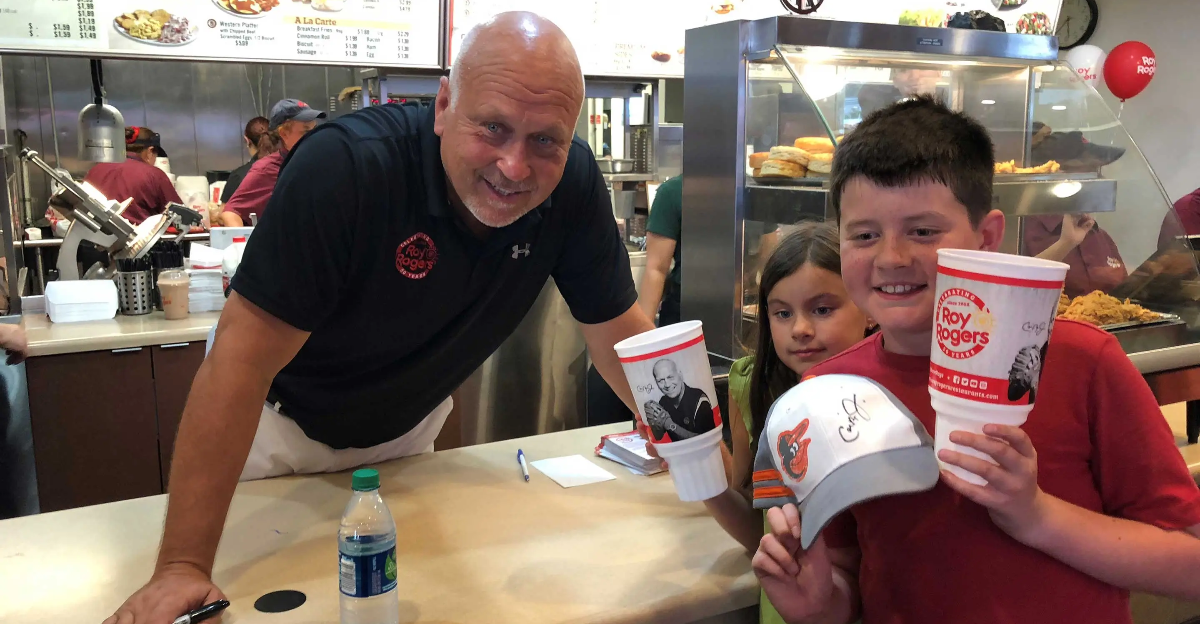
Before dawn on June 25, 2025, dozens of Roy Rogers “Royalists” pitched camp outside the brand’s new Cherry Hill, NJ restaurant, undeterred by a 100 °F heat wave.
By 5 a.m., the queue (spilling into traffic lanes) snaked around 614 Haddonfield Road, as die-hard fans lined up for one of 50 year-long free combo meal passes.
The turnout signaled more than a mere ribbon-cutting; it showed the Western-themed chain still spurs intense devotion nearly six decades after its 1968 debut.
That crowd energy – rivaling marquee grand openings – suggests Roy Rogers’ revival is being taken very seriously.
Dwindled Empire
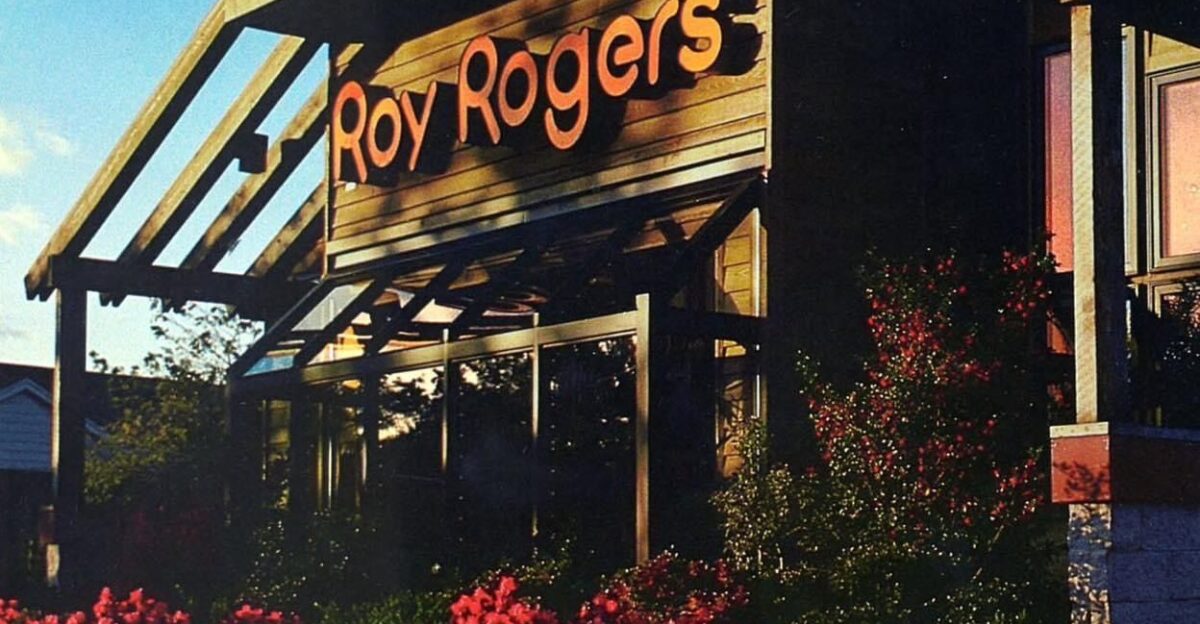
Roy Rogers reached its peak around 1990 with roughly 650 U.S. outlets, but the Marriott Corporation’s 1990 sale of the chain to Hardee’s (for $365 million) spelled trouble.
Hardee’s converted or sold off hundreds of Roy Rogers locations; by the early 2000s, the chain had dwindled to just a few dozen stores.
Today, only a handful remain, mostly in highway rest-area food courts.
This vanishing act – from coast-to-coast legend to near obscurity – underscores how even iconic fast-food chains can collapse without a focused strategy.
The collapse left just a spark of Roy Rogers behind, ready to ignite something new years later.
Cowboy Roots
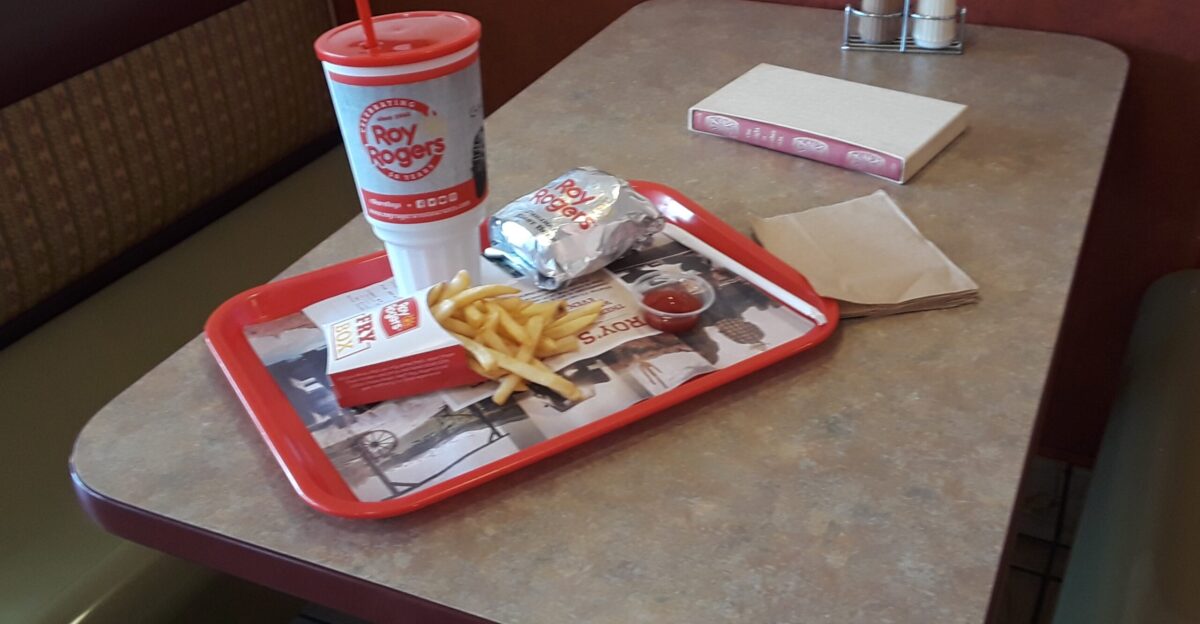
The chain’s origin story speaks to its rapid rise. In 1968, Marriott launched the first Roy Rogers in Falls Church, Virginia, rebranding RoBee’s House of Beef under the name of the beloved Western film star.
Over the next two decades, Roy Rogers restaurants spread rapidly along the East Coast, reaching more than 600 locations at their peak.
The brand’s success came largely from what it called its “Triple Threat” menu—a combination of USDA-choice roast beef sandwiches, hand-breaded fried chicken, and quarter-pound burgers—backed by the self-serve “Fixin’s Bar,” which let customers load their meals with condiments and toppings.
This menu diversity helped Roy Rogers stand out in a burger-dominated era and earned it a loyal following among Baby Boomers.
Hardee’s Hangover
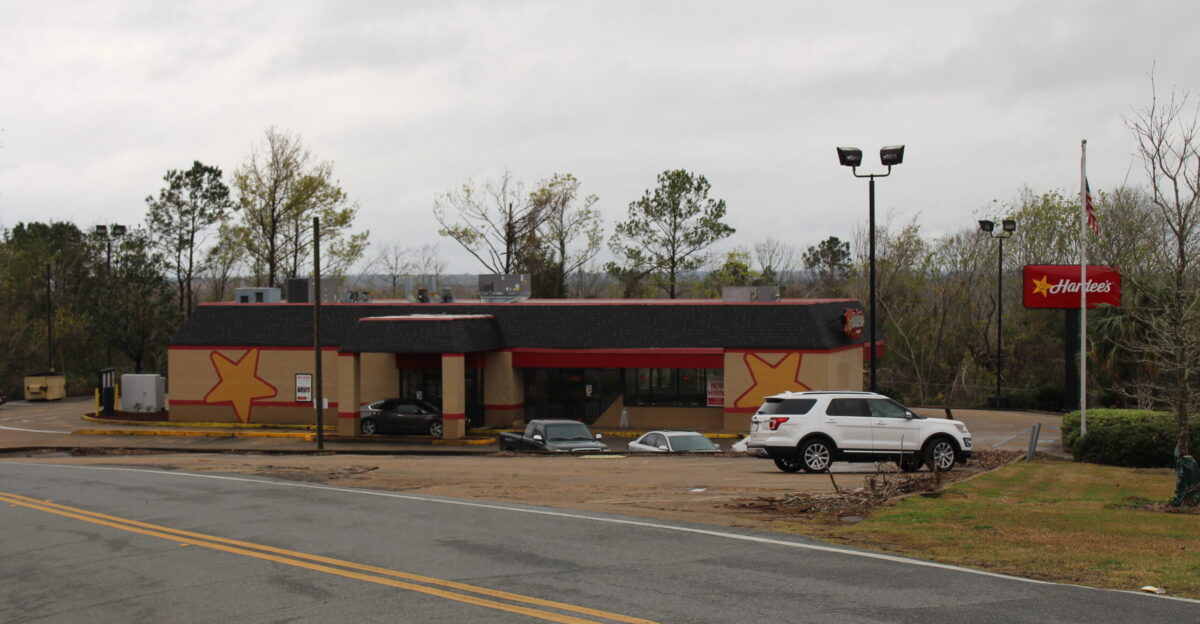
Things went south after the Hardee’s takeover. The new owners flipped over 150 Roy Rogers restaurants to Hardee’s and sold another 350+ outlets to Wendy’s, McDonald’s, and Boston Chicken.
Suddenly, loyal customers arrived one day to find their favorite cowboy eatery replaced by a generic burger joint.
Franchisees complained that marketing support evaporated, and store counts crashed through the late 1990s.
Industry analysts now cite this episode as a textbook cautionary tale of over-aggressive conversion. By 2002, only a skeletal network of Roy Rogers remained – just enough embers of the brand’s legacy to fuel nostalgia decades later.
Cherry Hill Returns
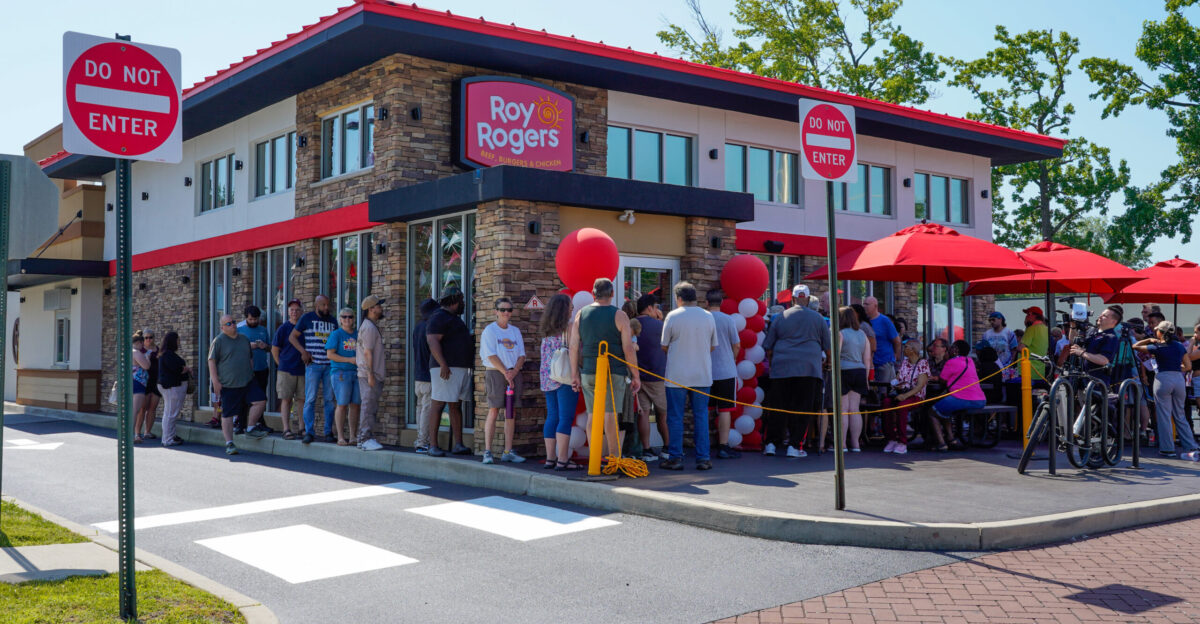
At 10 a.m. on June 25, 2025, Cherry Hill celebrated. Mayor David Fleisher joined Roy Rogers co-president Jim Plamondon to cut the ribbon on the brand’s first standalone restaurant in the area since the 1990s.
Plamondon hailed it as “a long-anticipated return” and “a true celebration for our Roy Rogers family”, signaling a strategy shift from highway rest stops to neighborhood streets (the address is literally 614 Haddonfield Road).
Roy Rogers fan Hope Holroyd laughed, “It was hot, but it was really fun to see everybody come out”. One new location hardly marks a full-scale revival, but it has ignited genuine excitement.
Jersey Buzz
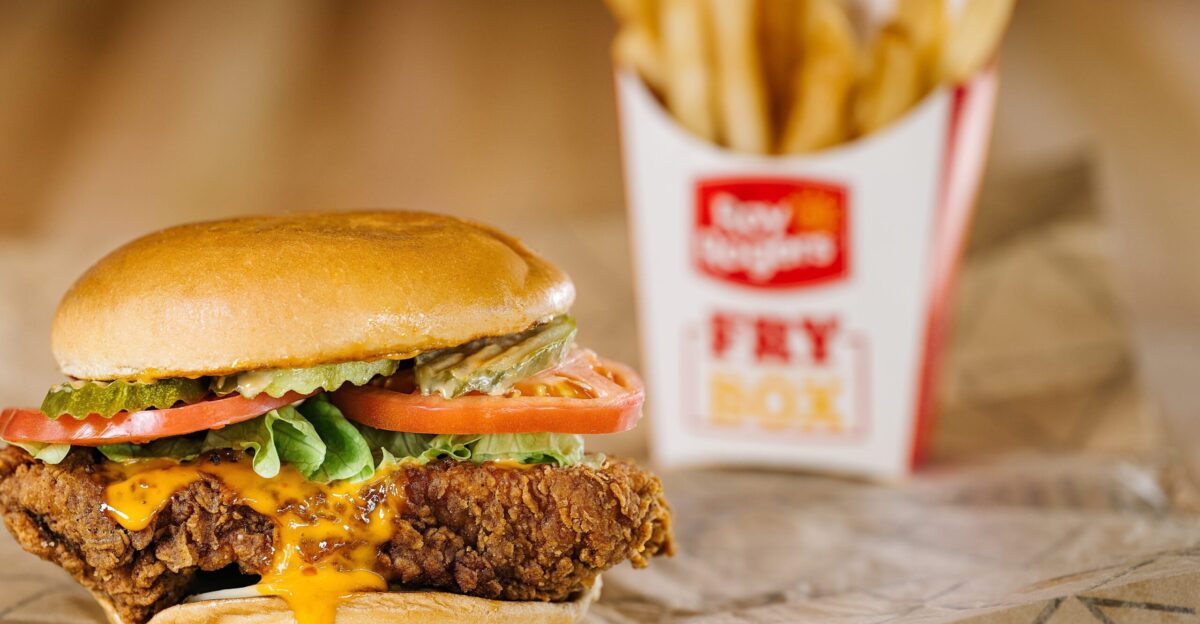
The initial results have been promising. Local retailers tracked roughly a 12% bump in foot traffic during Roy Rogers’ first week, with area malls crediting the new spot for luring families off I-95.
The free-combo giveaways (one per week for a year) generated a social-media frenzy.
Plamondon now calls Cherry Hill the “beachhead for renewed Mid-Atlantic growth,” noting the chain has 24 company-owned and 16 franchised restaurants in seven states — exceeding the 40-unit threshold for a “fast food chain”.
Town officials say Roy Rogers is already scouting sites in Camden and Burlington counties next. Will nearby towns line up to claim their own piece of Roy Rogers?
Fixin’s Bar Faithful
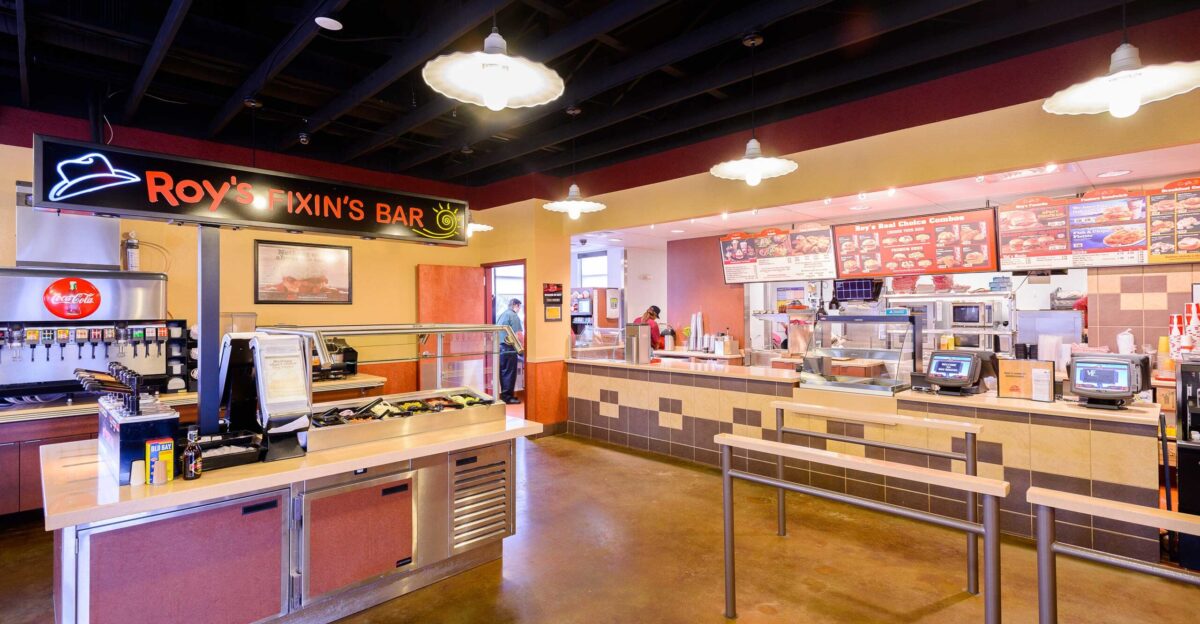
Longtime fans proved that nostalgia runs deep. Jodie Waldman, who drove up from Philadelphia, quipped, “I remember stuffing my burger with as many pickles as it could hold”.
Fellow fan Marc Orgiefsky, who camped out from midnight, fondly recalled teenage shifts at a Roy Rogers in Moorestown Mall: “The Double R Bar… the food there was great,” he said.
Such firsthand memories – and the massive lines in 90% humidity – are the real “stunning” moments behind the headlines.
But nostalgia alone is a launching pad: sustaining steady sales once the novelty fades remains the big question.
Revival Race
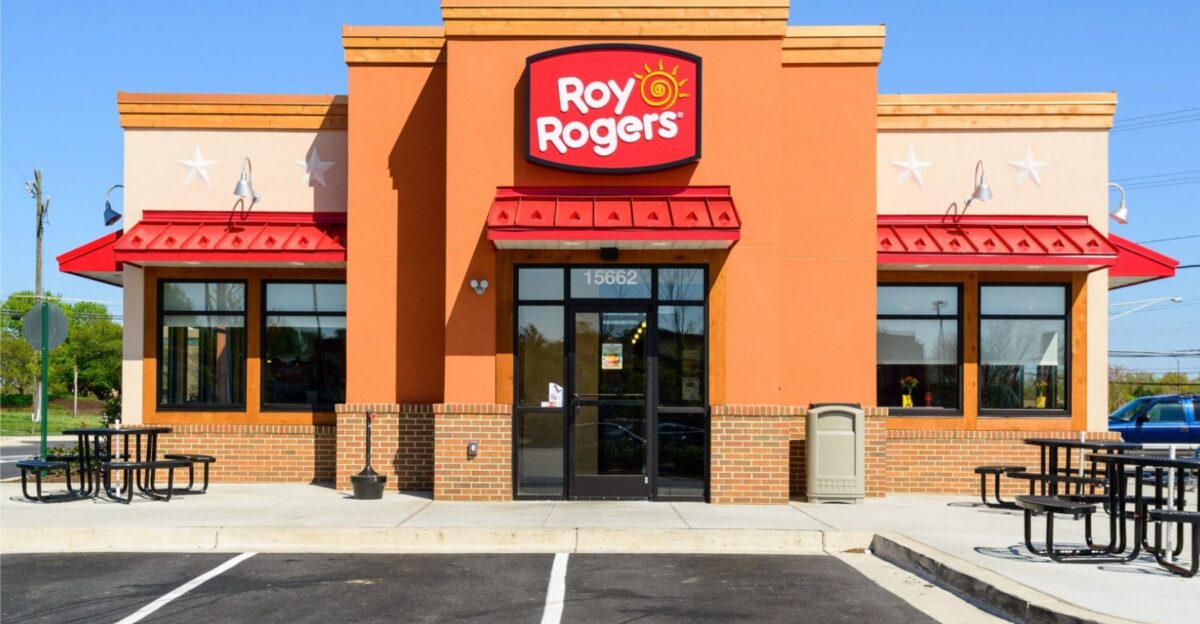
Roy Rogers’ comeback comes amid a broader retro push in fast food. McDonald’s recent Snack Wrap relaunch drove a 15% sales bump in July 2025, and Burger King’s viral “Whopper Whopper” jingle led to a 50% jump in U.S. EBITDA.
Analysts call it a “nostalgia arms race” as chains tap comfort menus amid economic jitters. Roy Rogers’ edge: its multi-protein, made-to-order menu (and eternal Fixin’s Bar) is a one-of-a-kind draw.
But it isn’t alone – competitors now compete for more than wallets, they vie for our childhood sentiments.
How Roy Rogers differentiates its brand story will be key as nostalgia becomes table stakes.
Billion-Dollar Appetite
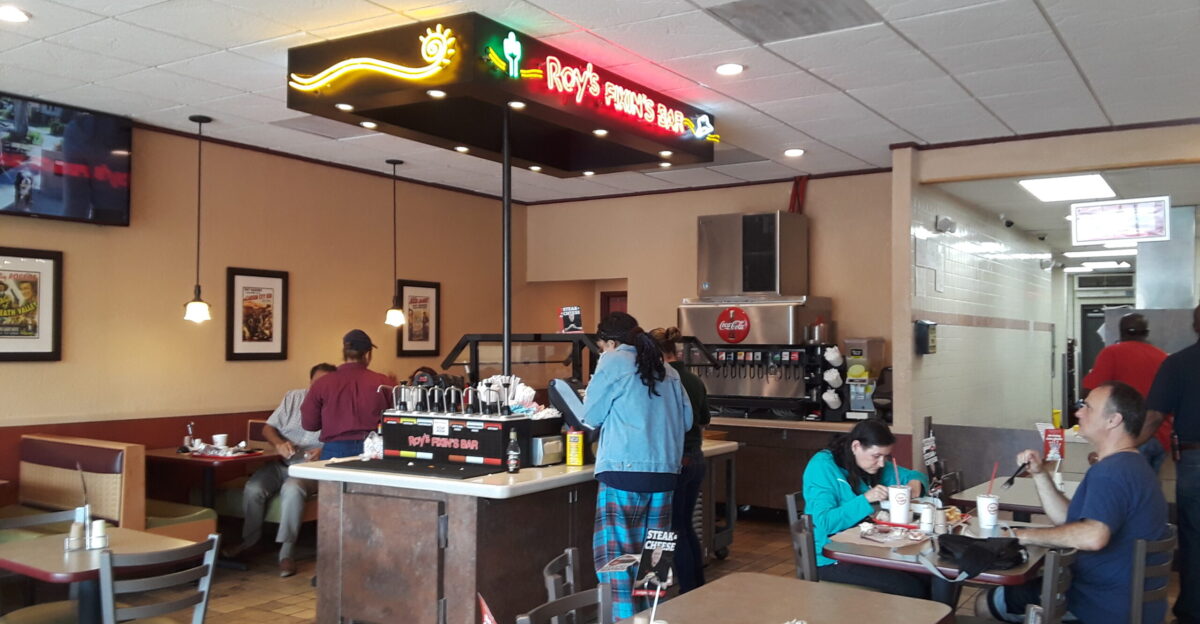
The U.S. quick-service restaurant (QSR) industry remains a juggernaut, valued at $447.20 billion in 2025 and projected to hit $731.60 billion by 2030, according to Mordor Intelligence.
Much of that growth is driven by stand-alone restaurants, which account for more than 70% of total market revenue—a key factor in Roy Rogers’ decision to pivot away from captive rest-stop outlets toward neighborhood locations with street addresses.
Between 2020 and 2021 alone, more than 11,000 new QSR outlets opened across the U.S., a sign of both opportunity and intense competition. Although Roy Rogers currently operates just over 40 units, its leadership sees room to grow even within such a crowded market.
If its nostalgia-fueled interest can translate into sustained weekly traffic, even modest expansion could unlock sizable returns. Still, building meaningful scale remains the next major test.
Trail Ahead

Roy Rogers isn’t stopping at Cherry Hill. The company’s real-estate chief, Joe Briglia, says they’ve already “received an overwhelming number of requests from loyal Roy Rogers fans… and we’re delighted to make it a reality”.
Franchise filings suggest a new stand-alone Roy Rogers can launch with about $1.8–2.2 million in initial investment (modest by big-QSR standards), but rising labor and food costs remain a serious headache.
The key test: can summer’s grand-opening crowds stick around after the novelty wears off?
In the coming months, analysts will watch if the chain can maintain momentum or if competition and costs drive it off course.
Franchising Boom
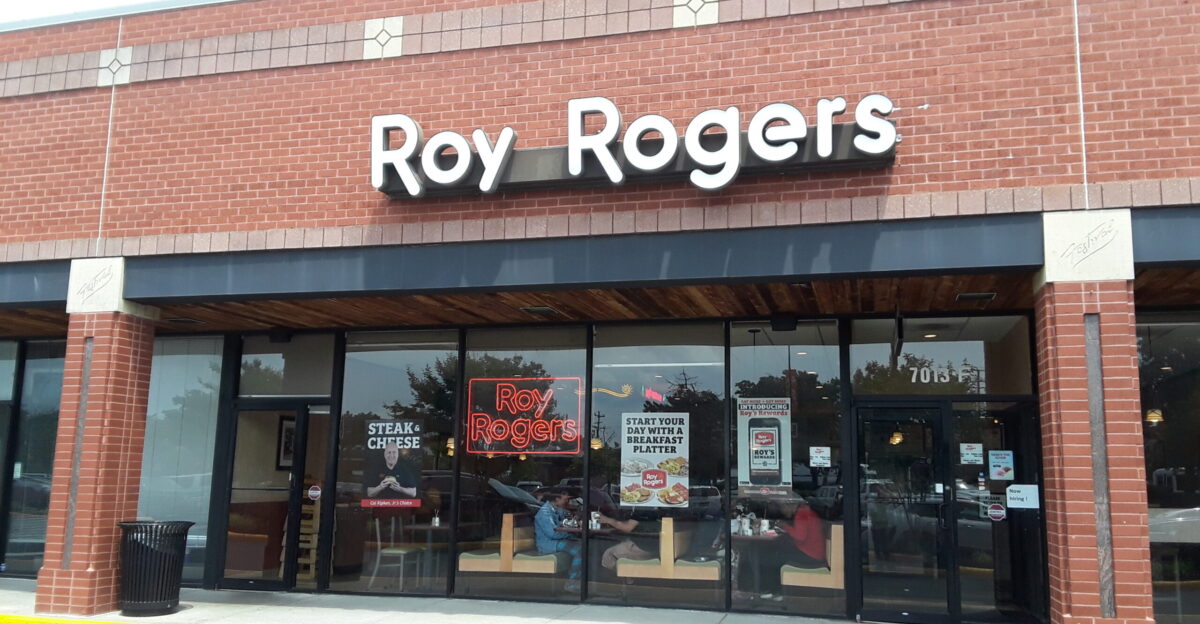
Veteran franchisees are already capitalizing on Roy Rogers’ revival. For example, Maryland operator Mohammad Haque has grown his portfolio to seven Roy Rogers restaurants — three in Alexandria, VA and four in Maryland.
The brand is also expanding in Northern Virginia: a third location in Leesburg is listed as “coming soon” on the Roy Rogers website.
These moves tap into the chain’s roots (its first restaurant opened in Northern Virginia back in 1968).
“The support from Roy Rogers has been instrumental to my success,” Haque said of his recent Waldorf, MD expansion.
Economic Headwinds
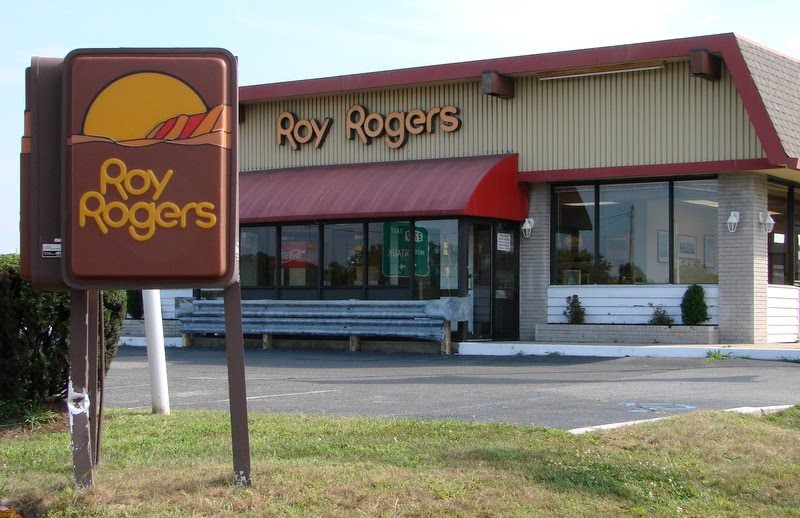
Not everyone in restaurants is racing to expand. A mid-year survey found 89% of restaurant leaders facing rising labor costs and 91% facing higher food prices.
Many operators are reacting by pausing growth: 58% say they won’t open any new locations in 2025.
Roy Rogers is mitigating this by keeping new builds lean – its $1.8–2.2M estimate per location is low compared to larger QSR projects – but inflation still squeezes margins. Growth will depend on franchisees’ ability to manage those costs while maintaining quality.
Roy Rogers’ expansion might stall if economic pressures prove too much for a niche chain.
Modern Menu and Tech
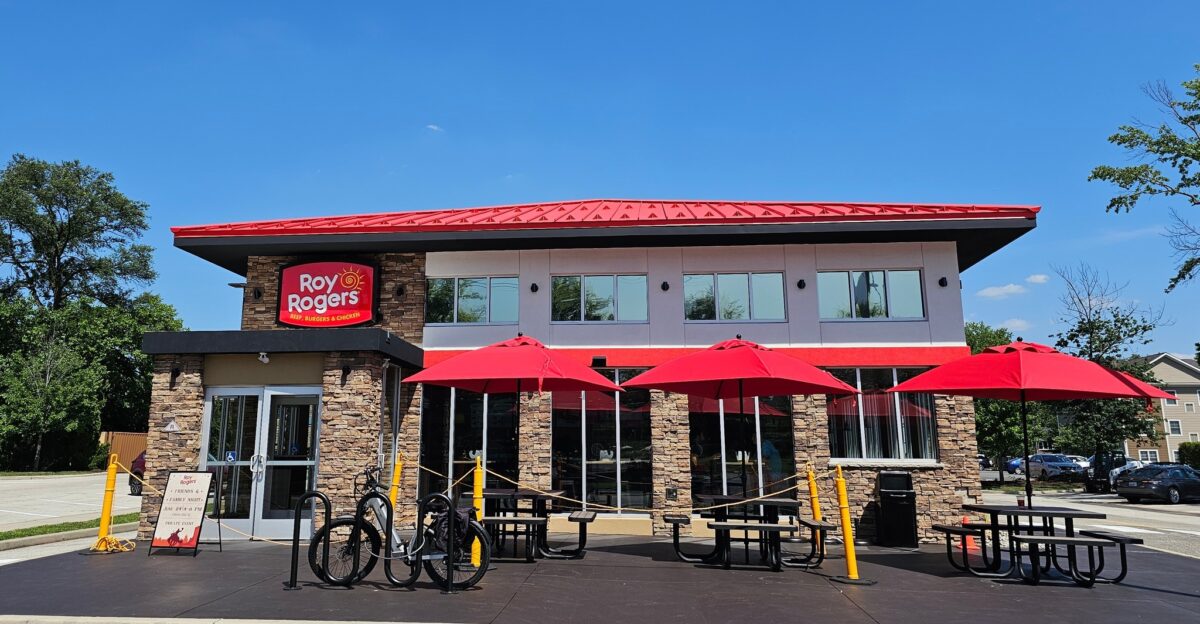
Roy Rogers is blending its old-school appeal with modern touches. The new Cherry Hill restaurant includes digital kiosks and electronic menu boards to speed service and reduce labor.
The menu itself remains a differentiator: no other major chain matches Roy Rogers’ combination of USDA-choice roast beef and hand-breaded fried chicken, all customizable at the famed Fixin’s Bar.
Seasonal items and branded merchandise add a fresh twist. In short, management pitches Roy Rogers as a tech-savvy, multi-daypart chain – not just a relic.
The hope is that this balance will attract new generations while keeping longtime fans happy.
Competition and Strategy
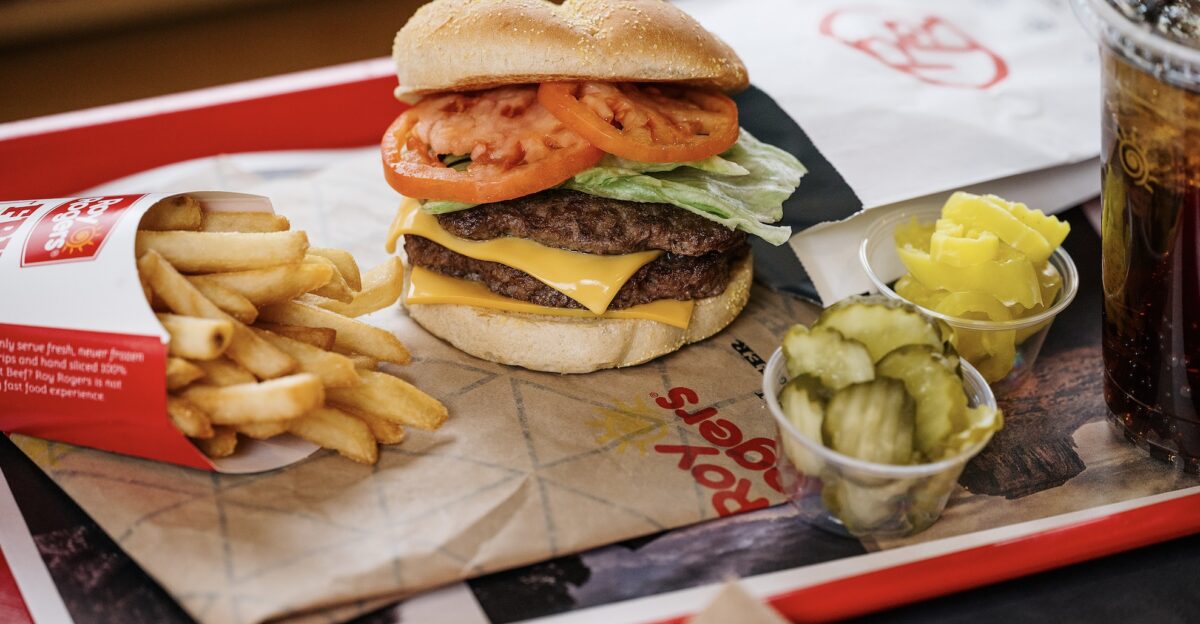
Even as Roy Rogers expands, competition is fierce. It faces not only fast-food giants (McDonald’s, Wendy’s) but also specialty burger and chicken chains elbowing for market share. Many rivals are also reviving retro campaigns or limited-time throwbacks.
Roy Rogers’ uniqueness lies in its brand story and menu breadth, but marketers warn that nostalgia wears thin.
An industry observer notes that future success will hinge on becoming a habitual choice for families, not just a novelty.
Roy Rogers must prove it can operate flawlessly at scale or risk being outpaced by better-funded rivals.
The Long Haul
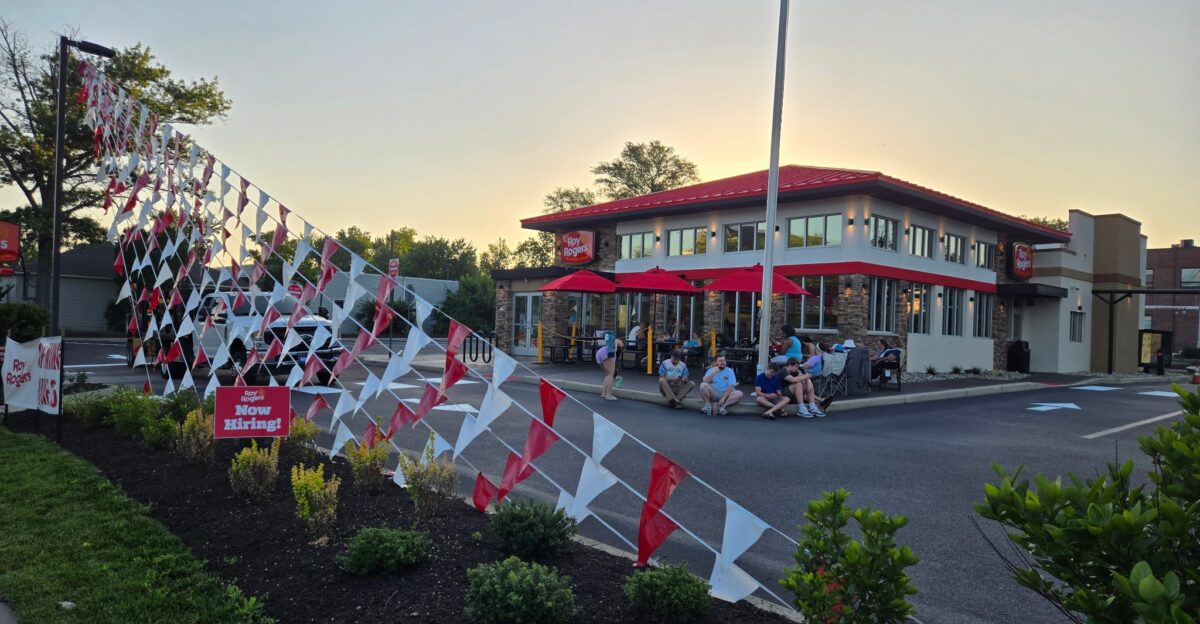
Roy Rogers’ reboot is still in the early innings. The first steps have generated buzz, but the road ahead is long. Can the chain turn one hit into dozens? Will today’s deal-chasing fans become loyal regulars?
Observers will watch sales figures closely after the summer rush. If Roy Rogers can deliver consistent quality and keep costs in check, the revival could endure.
If not, this comeback might prove as short-lived as previous QSR trends.
Only time – and numbers – will show whether the cowboy’s ride holds steady or sputters out.